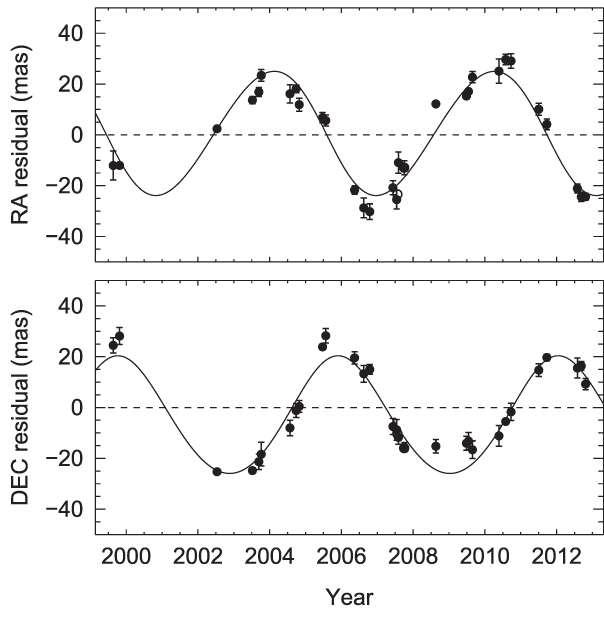Distance is one of the most important measurements in astronomy. Without it, we can't know much about stars. But distance is also one of the most difficult measurements because stars are very far away. The most accurate technique, known as parallax, takes advantage of the Earth's orbit to measure distances in much the same way as our eyes provide us with depth perception. Each eye sees the world from a slightly different position and our brain combines the images to determine how far away objects are. As the Earth orbits the Sun we see stars from slightly different positions and astronomers combine the data to measure the distances to stars.
The parallax technique has another benefit: it can be used to detect companions that orbit stars, including planets, other stars (binary systems like Tatooine in Star Wars), and a peculiar kind of failed star
known as brown dwarfs. This is possible because the companion's gravitational pull causes the star to wobble, which creates an additional signal in the parallax data. The figure below shows the wobble caused by a companion star. The lines that are fit to the data are similar to sine and cosine functions in trigonometry because the motion of the star is approximately a circle. The angles involved are very small, 100,000 times less than the width of the full moon.

This paper reports distance measurements for 16 star systems based on up to thirteen years of observations, which are useful to astronomers for a wide range of purposes. We also looked for companion planets and brown dwarfs. Although we did not find any, a null result
is still very useful because the universe is such a big place and there are many possible combinations of stars and planets. As more studies like this are conducted, we will be able to say which types of planets are common and which are rare, ultimately informing the search for life beyond our Solar System.
You can read the full paper, The Solar Neighborhood. XXXIV. A Search for Planets Orbiting Nearby M Dwarfs Using Astrometry, on the Astronomical Journal website.
This research was done in collaboration with Todd J. Henry, Wei-Chun Jao, Samuel N. Quinn, Jennifer G. Winters, Philip A. Ianna, David W. Koerner, Adric R. Riedel, and John P. Subasavage. The paper has been cited by 38 peer-reviewed articles as of September 2021.